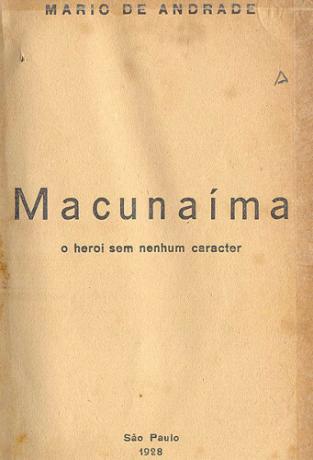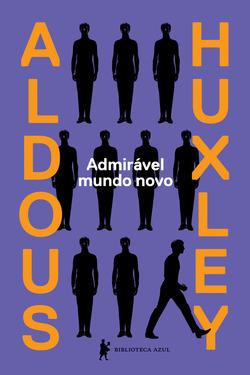Mario de Andrade he was the great intellectual mentor of the Generation of 20, he was also a poet, prose writer, pianist, public servant and, above all, a man committed to the cultural development of Brazil.
His work, divided into books of poetry, fictional prose, folklore, essays and music history, is, to this day, a landmark in national literature, as it introduces a new literary language, which appropriates the language of the people, unlike academicism Parnassian in vogue until then.
Read too: The representation of blacks in Brazilian literature
short biography
Mario Raul de Morais Andrade was born on October 9, 1893, in the city of São Paulo. He studied piano from an early age, having completed the course at the Conservatório Dramático e Musical de São Paulo in 1917, the same year he published his first book of poems, still in the Parnassian style, entitled There is a drop of blood in each poem.
Still in 1917, with the death of his father, he started working as a piano teacher. He also works as an art critic and attends artistic circles in São Paulo, where he meets
Oswald de Andrade and Anita Malfatti, with whom he became very close and with whom he articulated the 1922 Modern Art Week.It was also in 1922 who published crazy Pauliceia, book considered landmark of brazilian modernism. From that period onwards, he became one of the most important figures in Brazilian literature and culture, combining an intense literary production with a dedicated life of studies in the Brazilian folklore, music and visual arts.

Between the years 1934 and 1937, was head of the Department of Culture of the City Hall of São Paulo, founding the Public Disco, in addition to promoting the I National Sung Language Congress. In 1937, he founded the Society of Ethnography and Folklore of São Paulo.
Moved to Rio de Janeiro in 1938 and became director of the Federal District Arts Institute. Back in São Paulo, he worked in the Historical Heritage Service. victim of a heart attack, died in São Paulo, on February 25, 1945.
Also access: Biography of Machado de Assis – the trajectory of the only realist in Brazil
literary features
Considered as the great intellectual name of Brazilian modernism, Mário de Andrade stands out for his pioneering spirit. Your initial poetry retrieves elements from European vanguards, such as automatic writing, movement characteristic surrealist, which the author later revisits, in the light of conscience, mixing some theory with unconscious lyrical drives. The influence of the cubism, which, in Mário's poetry, appears as an abstract deformation and valorization of primitivism.
![Stamp with portrait of Mário de Andrade on the occasion of the centenary of his birth. [1]](/f/780890cd985806e2d10d9dc8dfaccc6e.jpg)
At first, the author's poetic work is intended to break the canonical artistic paradigms of academic poetry, in clear modernist action. Afterwards, it turns to an increasingly intense exploration of rhythm and themes taken from Brazilian popular folklore.
With the eyes always turned to Brazilian social problems, as well as for the culture national, Mário also wrote fictional prose, which reflects the author's commitment to the creation of a national literary language.
Do not stop now... There's more after the advertising ;)
Construction
- 1917 – There is a drop of blood in each poem (poetry)
- 1922 – crazy Pauliceia (poetry)
- 1925 – The slave who is not Isaura (speech)
- 1925 – First floor (Tales)
- 1926 – Khaki rhombus, or Military affections mixed with why I know German (poetry)
- 1927 – love, intransitive verb (idyll)
- 1927 – tortoise clan (poetry)
- 1928 – Macunaíma, the hero without any character (rhapsody)
- 1929 – Compendium of Music History (song)
- 1930 – bad shot (poetry)
- 1930 – imperial fads (song)
- 1933 – music sweet music (song)
- 1934 – fine art (Tales)
- 1935 – O Aleijadinho and Álvares de Azevedo (essay)
- 1936 – Popular music and song in Brazil (critical-biographical essay)
- 1939 – dating with medicine (rehearsal)
- 1940 – Musical expression in the United States (song)
- 1941 – Brazilian music (history and folklore)
- 1941 – Poetry (poetry)
- 1942 – little music anecdote (song)
- 1942 – the modernist movement (theory)
- 1943 – the ball of the four arts (rehearsal)
- 1943 – Aspects of Brazilian Literature (essay)
- 1943 – Candinha's children (chronic)
- S.d. – the bird stuffer
- 1945 – Father Jesuino of Mount Carmel (biographical research)
- 1946 – lira paulistana (poetry)
- 1946 – the car of misery (poetry)
- 1947 – new tales (Tales)
- 1966 – complete poetry (poetry)
In addition to this vast published work, Mário also left enormous mail volumes, published posthumously.
Macunaíma, the hero without any character
It is one of the best known and most talked about works by Mário de Andrade. To write it, the author relied on a project to represent the Brazilian difference, in a synthesis of national folklore that takes the form of a picaresque novel, mixing oral tradition and primitivism with the typically bourgeois genre of the novel.
His intention was to address numerous problems in Brazil, such as cultural submission and the import of models socioeconomic conditions, the lack of definition of a national character, linguistic discrimination, and, above all, the search for the cultural identity Brazilian.

A blend of epic and picaresque novel, the work is characterized as rhapsodyModern, as it brings together vast knowledge of Brazilian folklore and cultural traditions, countless legends, foods, beliefs, animals and plants from various regions, as well as various cultural and religious manifestations, without referring to any specific region of origin, giving a impression of national unity.
Full of these regional mergers, Macunaíma is criticism of regionalism and tries to break the limits determined by the geography. O space is a mixture of several Brazilian regions, and the time varies between the mythical of the legend and the contextualized and contemporary time.
Macunaíma is a hero without any character, because what he builds in one chapter, deconstructs in another. Lives moments of extreme bravery and also extreme cowardice; he is lazy but he is bold; he is an adult as a child; it is the primitive that inhabits civilized man. Macunaíma is not a person, he is a hybridlinguistic.
"There! How lazy…” is a recurring catchphrase of the character. The theme appears as an “Amazonian sign”: in a land of sun and heat, laziness seems much more natural than work. It is a opposition to "civilizing" rules of Europe of valorization of work. By evoking the images of laziness and the net, the author delineates a connection with primitive feeling.
In Macunaíma, is found so much to appreciation of "tropical feelings" as a catalog of third world diseases, which appears, among other terms, in the image of ants, present throughout the work. Ants also represent what Macunaíma and Brazil lack: organization, calculation. The ant is a bourgeois animal par excellence, in opposition to the cicada, associated with the figure of idleness or, in more tropical terms, with the sloth.
Offering a compendium of Brazilian inconsistencies, Mário de Andrade does not make it clear, in Macunaíma, if you are proud or ashamed of Brazil. That incoherent hybridism it reproduces cultural dynamism and the lack of national organization, concluding in pessimism.
See too: Anguish: novel by Graciliano Ramos
Sentences
"Poor health and a lot of health, the ills of Brazil are."
“Before modernism, Brazil was a Portuguese country with French cultural modes.”
"I'm a Tupi playing a lute."
"The past is a lesson for reflecting, not for repeating."
“My work is all popular like this: Brazilians, it's time to make Brazil.”
Image credit
[1]rook76 / Shutterstock
by Luiza Brandino
Literature teacher


